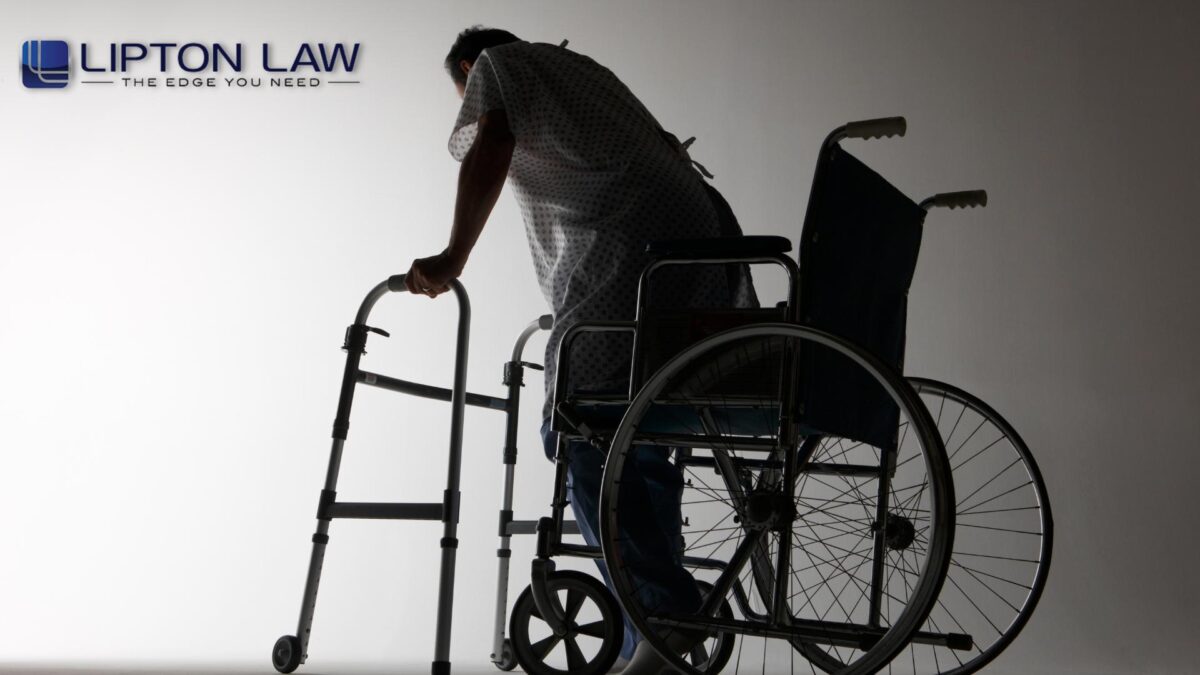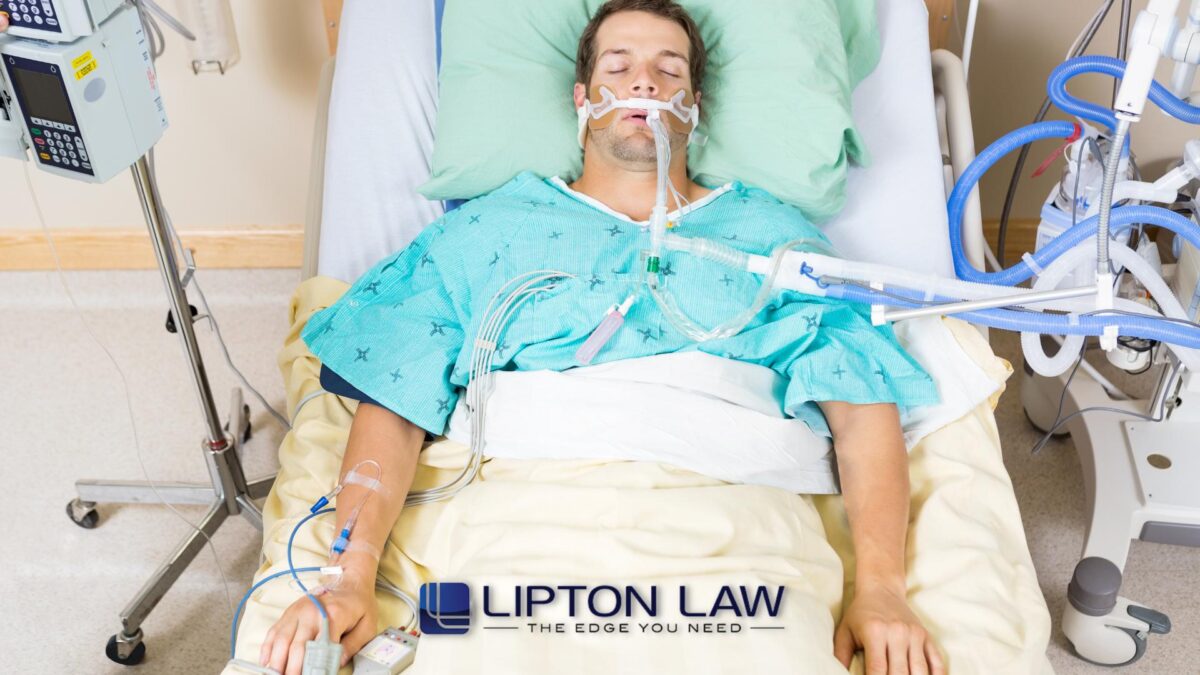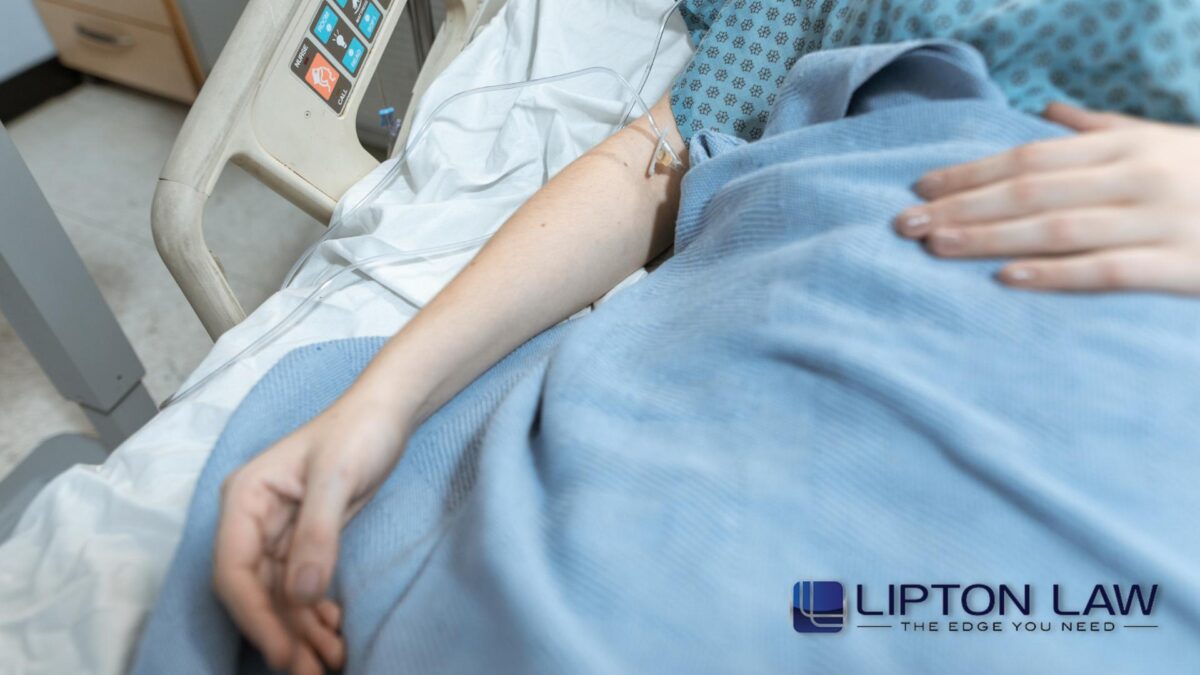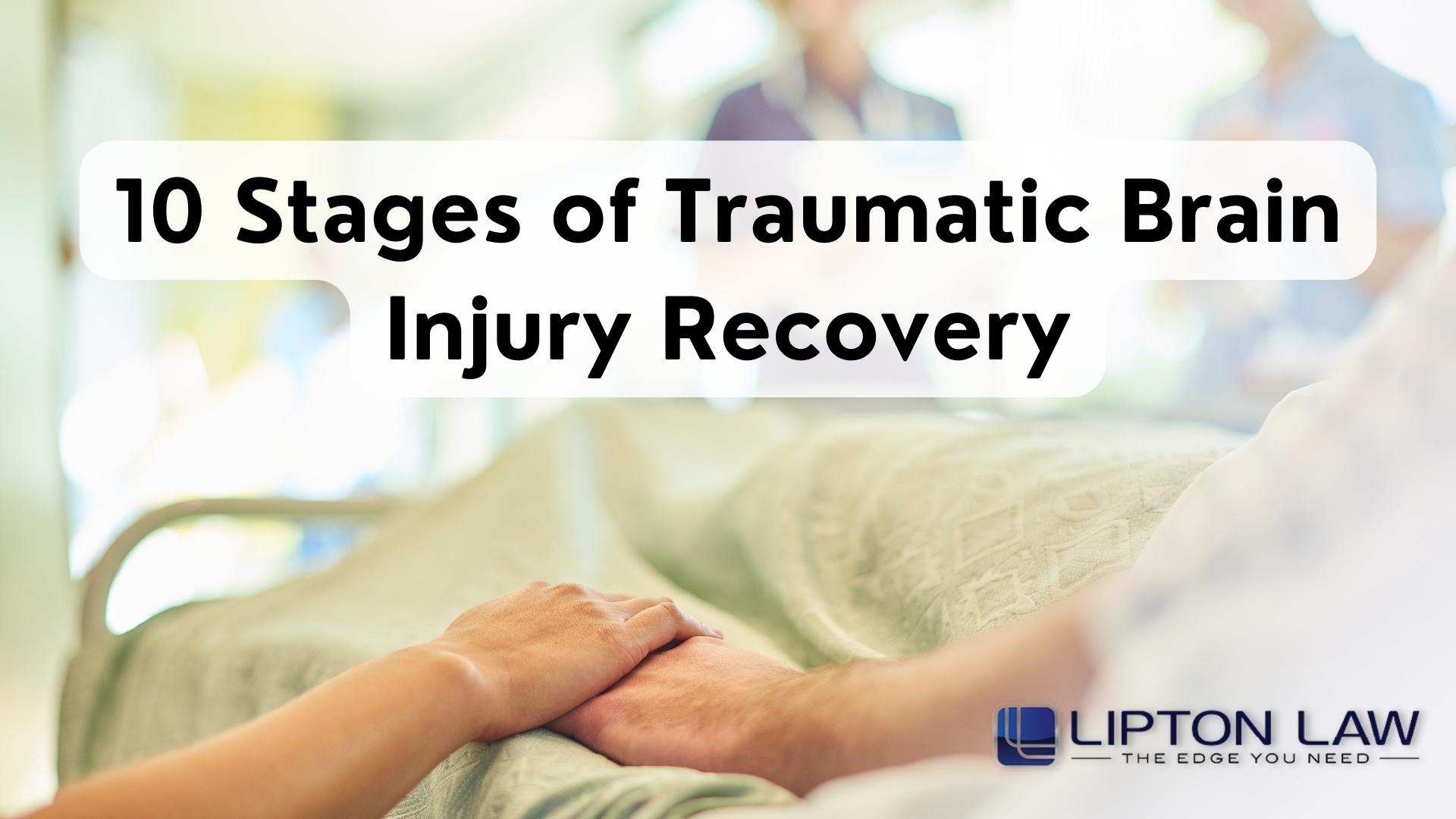Navigating the aftermath of a traumatic brain injury (TBI) can be a profoundly challenging journey, not only for the survivors but also for their loved ones. It’s a path marked by uncertainty, requiring medical intervention and compassionate legal guidance. At Lipton Law, we recognize the complexity of the TBI recovery process and the importance of understanding the 10 stages of brain injury recovery to ensure severe brain injury survivors receive the support they need.
The recovery from TBI is often described as a progression through various stages, each with its unique challenges and milestones. In our latest blog, the Southfield traumatic brain injury attorneys explain the ten critical stages of recovery and provide insight into the patient’s journey. By understanding these stages, our legal team is better equipped to advocate for our clients’ needs, ensuring they receive proper care and compensation.
If you or a loved one sustained a brain injury in an accident caused by another’s negligence, the personal injury attorneys at Lipton Law are ready to advocate for you. To learn more about your legal options, schedule a free consultation by calling 248-557-1688 today.
What Is a Traumatic Brain Injury?
A traumatic brain injury is a type of acquired brain injury (ABI) that occurs when a sudden trauma causes damage to the brain. This type of head injury can result from a violent blow or jolt to the head or body, or an object penetrating the skull, disrupting the normal function of the brain.
The severity of a TBI can vary, from a mild traumatic brain injury to severe cases, which can result in bruising, torn tissues, bleeding, and other physical damage to the brain, resulting in long-term complications or death. Even a moderate traumatic brain injury, like a concussion, can have serious side effects and even develop into a severe TBI.
Traumatic brain injuries can lead to a wide range of physical, cognitive, emotional, and behavioral effects. Depending on the severity of the head injury, a victim could face various outcomes, from complete recovery to permanent disability or even death.
The impact of a TBI can extend beyond the physical injury, affecting a person’s lifestyle, employment, relationships, and ability to perform daily activities.
What Are the Symptoms of a Severe Traumatic Brain Injury?

A severe traumatic brain injury can show a wide array of symptoms. Some symptoms may be evident in the early stages or develop over time as the injury progresses. Physical symptoms often include loss of consciousness, persistent headache or headache that worsens, repeated vomiting or nausea, seizures or convulsions, dilation of one or both pupils of the eyes, clear fluids draining from the nose or ears, inability to awaken from sleep, and weakness or numbness in the fingers and toes.
Cognitive or mental symptoms are also common, such as intense confusion, agitation, combativeness, or other unusual behavior. Slurred speech, disorientation, and inability to recognize people or places can also occur, signaling significant cognitive disruption. Coma and other disorders of consciousness can also be a result of severe TBI.
Individuals with severe TBI may exhibit various neurological responses characteristic of brain damage. These can include coordination problems, profound confusion, and difficulty with attention and memory. Sensory symptoms might consist of blurred vision, ringing in the ears, a bad taste in the mouth, changes in the ability to smell, or sensitivity to light or sound.
These symptoms can indicate the severity of the injury and the areas of the brain that are affected. It is important to note that the signs of severe traumatic brain injury need immediate medical attention.
How Do Traumatic Brain Injuries Happen?

Head injuries can result from a number of various accidents. The most common causes of traumatic brain injuries are:
- Slip and Falls: This is the most common cause of TBIs, especially in older adults and young children. Slip and fall accidents can occur anywhere, like nursing homes, job sites, and public places.
- Motor Vehicle Accidents: Car accidents, motorcycle accidents, and any accidents involving motor vehicles can result in TBIs from the sudden deceleration that occurs upon impact, causing the brain to collide with the inside of the skull.
- Violence: Gunshot wounds, domestic violence, child abuse, and other assaults. Shaken baby syndrome is a traumatic brain injury in infants caused by violent shaking.
- Sports Injuries: Injuries from a variety of sports, especially those involving high-impact or extreme sports, can cause TBIs.
- Penetrating Wounds: Sharp objects penetrating the skull, such as bullets or fragments from a blast, can cause severe brain damage.
- Work-related Injuries: Accidents in industries such as construction, mining, or any field involving physical labor or machinery are also common sources of TBIs.
What Are the 10 Stages of Brain Injury Recovery?

Recovery from a traumatic brain injury is often a long and difficult journey that varies from one injured person to another. Despite the unique nature of each TBI, healthcare professionals have observed a general recovery pattern, the ten TBI recovery stages.
These stages help family members, caregivers, medical professionals, and advocates understand where survivors are in their recovery process and what kind of support they might need next.
In this next section, our Southfield brain injury attorneys will explain the ten stages of TBI recovery that outline the usual progression from the initial brain injury through to physical therapy and eventual return to daily life. Each step has challenges and breakthroughs, serving as a crucial framework for developing treatment plans and providing unique legal support.
Early Recovery Stages
In the early stages of traumatic brain injury recovery, the focus is on immediate stabilization, managing life-threatening complications, and minimizing further damage to the brain. This phase is followed by a period where consciousness may fluctuate, and basic responses reemerge as the brain heals.
Intensive rehabilitation typically begins here, with therapies to reestablish fundamental sensory, motor, and cognitive functions. Each small step forward lays the groundwork for the more complex recovery stages that follow.
Stage 1: Coma

The first stage of traumatic brain injury recovery is often a coma, a state of unconsciousness with no voluntary movements or responses to the environment. Comas might sound like a bad thing, but the brain is working to repair itself from the trauma while in this unconscious state.
During this recovery phase, medical care is focused on life support and monitoring for any signs of change in the patient’s condition.
Stage 2: Vegetative State
The vegetative state is the next stage of recovery from a severe brain injury. A slight return of reflexive responses marks stage two, although the patient remains unaware of their surroundings and interactions.
In this state, patients may exhibit sleep-wake cycles and can open their eyes but do not display signs of meaningful consciousness or purposeful movement. Caregivers continue to provide constant medical care and watch for any subtle indications of neurological improvement.
Stage 3: Minimally Conscious State
Patients in the minimally conscious state will start to show inconsistent, but discernible signs of awareness. Unlike the vegetative state, patients may follow simple commands, manipulate objects, give yes or no responses, or even show emotional reactions. However, these responses may be sporadic and fluctuate in clarity. During this stage, doctors may give the patient medication to encourage brain stimulation.
Stage 4: Post-Traumatic Amnesia
As patients begin to regain consciousness, they can experience post-traumatic amnesia (PTA). During this stage, the injured person may struggle to remember past events, create new memories, and exhibit behavioral changes. Inappropriate behavior is common during this stage. They might recognize family members or friends but struggle with understanding why they are in the hospital or rehab facility.
The care approach focuses on cognitive rehabilitation and coping strategies to help manage the confusion and frustration accompanying PTA. The length of this stage varies and is closely monitored, as the duration of amnesia can indicate the injury’s severity and the potential for long-term recovery.
Later Recovery Stages

As patients progress into the later stages of recovery, rehabilitation is critical. These later stages involve gradually restoring the patient’s independence and relearning complex cognitive and motor skills.
Therapists work diligently with patients to help them regain their ability to perform daily activities, manage their own care, and potentially return to work or school. Emotional and psychological support is also important to address the challenges of identity changes and social reintegration.
Stage 5: Confused with Maximal Assistance
At this stage, patients may enter a state of confusion and require maximal assistance. They may show a marked improvement in alertness but struggle with significant disorientation, memory impairment, and a lack of insight into their condition. This confusion can cause the patient to respond inappropriately or in a way that doesn’t make sense.
Stage 6: Confused with Moderate Assistance
Patients are still confused but improving at this stage of recovery. They become more aware of their surroundings and can perform familiar tasks for short periods with help. Memory recall for pre-injury events may become clearer, though recent memory is typically still impaired.
Stage 7: Automatic with Minimal Assistance
At this part of the healing process, individuals can perform tasks with minimal assistance. Their motor and cognitive skills have improved, and they can complete familiar tasks with some help. While patients may be able to function with assistance, they are not capable of starting tasks or planning for the future.
Stage 8: Purposeful with Standby Assistance
Patients regain a significant amount of independence, engaging in activities with minimal assistance when needed. They handle daily tasks more confidently, are more aware of their limitations, and may start returning to community involvement.
Stage 9: Purposeful with Standby Assistance on Request
As patients near the end of their traumatic brain injury recovery, they can complete most activities independently and understand when to ask for assistance. They can manage most routines and make their own decisions, with help sometimes needed for complex tasks.
Stage 10: Purposeful and Functionally Independent
At this last phase, patients have regained control over their lives, can handle daily responsibilities, and make decisions without assistance. They can participate fully in home, work, and social environments.
While they may still experience some long-term effects from their injury, their adaptability allows them to lead a fulfilling life. Rehabilitation now focuses on the maintenance and further improvement of their abilities.
At this final stage, the resilience and hard-won gains of patients stand as a testament to their determination and the support of their healthcare and personal networks.
Contact a Michigan TBI Attorney with Lipton Law Today

A traumatic brain injury is one of the most catastrophic injuries that the human body can suffer. The stages of recovery are long and require extensive medical care. At Lipton Law, we understand that focusing on recovery is the most important thing following a severe TBI, and pursuing legal action is the last thing on your mind.
That’s why when you choose the Southfield brain injury attorneys at Lipton Law, you can trust that your legal team will do the heavy lifting to build a strong case against the responsible party so that you or your loved one can focus solely on recovering.
Our commitment at Lipton Law extends beyond the courtroom to ensure that each TBI survivor and their family is equipped with the resources and support necessary to navigate the stages of recovery. While the healing journey may be long, no one should have to walk it alone.
To schedule a free consultation with one of our compassionate attorneys, call Lipton Law at 248-557-1688 today.

